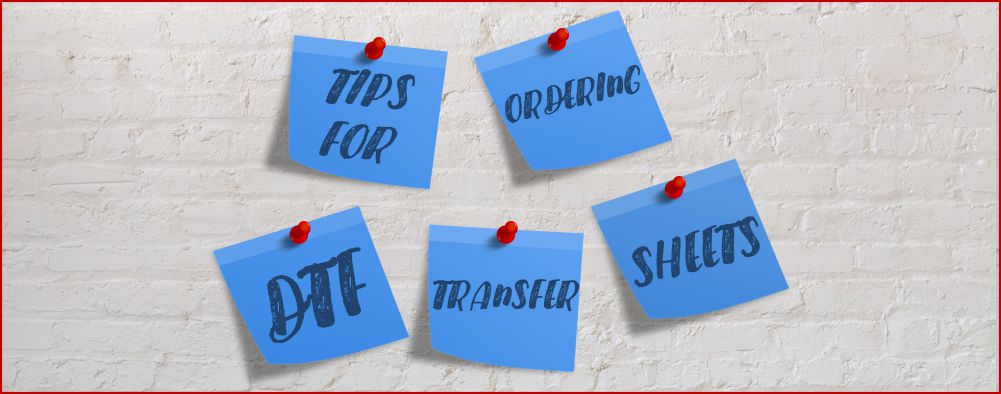From our perspective of selling custom DTF transfer sheets, we have assessed and determined the optimum way to order DTF sheets. If you are ordering DTF transfer sheets, there are suggestions we have to ensure that you as a customer are pleased with the end result. You might be someone ordering for personal use or for your business and customers; either way these tips for ordering DTF transfers are listed below in attempt to assist you.
Tip 1: Specify the dimensions and quantity needed of each print:
The printers who are supplying the sheets must know the size of the prints. Mainly because each print shop has their own max imprint size they’re able to do. For that reason, certain print jobs will have to either be confirmed or denied depending. Plus, the quantity and size of each print determines the price to be charged for the transfer sheets. Not to mention, that if your order is being shipped, the size of the prints will decide how to best ship your sheets. Also, knowing the amount of sheets needed allows the printer to gauge the turnaround time and how soon your order will be ready.
Tip 2: Supply your artwork in the correct file format:
Every print shop has a file format that they favor. When printing DTF transfer sheets, typically the preferred format for any file is PNG. This format allows for artworks to be saved with a transparent background; meaning that there should not be a box or background behind your design. Provided that the background is removed, the following formats are also acceptable in most cases: PDF, EPS, PSD, and SVG.
Tip 3: Provide artworks without negative space:
To clarify, in this context negative space is defined as the empty space or blank margin surrounding the subject of an artwork. In the case that there is negative space bordering your design, it is good practice to crop or remove such from your file. Doing this is crucial, because the areas in your artwork that are blank are taking up print space. Therefore, if your art needs to be printed at a particular size, the actual result will be smaller because of all the extra space.
Tip 4: Don’t supply mirrored images or with fine lines:
Most DTF printers are accompanied with RIP software that flips the image automatically when it prints. For that reason you can provide your image(s) as is, without being mirrored. In addition, designs that have fine or thin lines/marks are unlikely to transfer well or at all. There should be a minimum of 2pts in thickness for thin parts of artworks. Otherwise those sections may not properly transfer to the garment because the adhesive powder cannot adequately cohere.
Tip 5: Only send one file of each artwork/design:
Inform the print shop if more than one DTF transfer sheet is needed of the same artwork, and they can print multiples. Only one file is necessary; there is no need to send repeats of the same exact artwork.
Tip 6: Mention the preferred in-hands date for your order:
The date in which you need your completed order, will establish if a rush fee needs to be charged or not. Overall, this also helps print shops best manage your new order with occurring orders; then your deadline can still be met.
Hopefully, the next time you place an order you remember this simple list of tips for ordering DTF transfer sheets!

